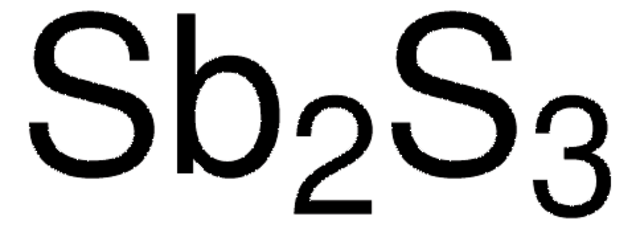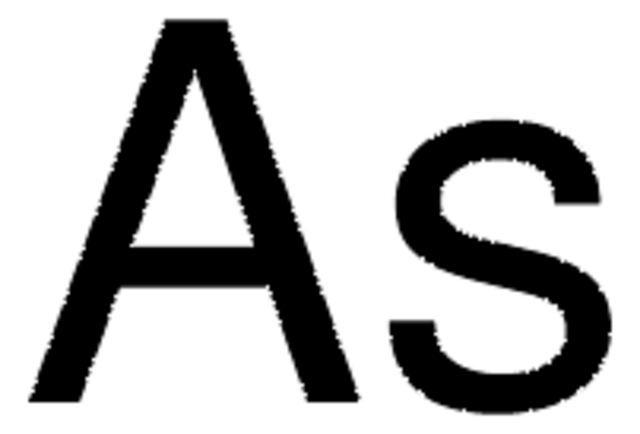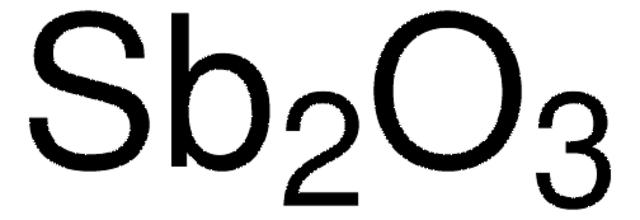266329
Antimony
powder, -100 mesh, 99.5% trace metals basis
Synonym(s):
Antimony black, Antimony element
About This Item
Recommended Products
Assay
99.5% trace metals basis
form
powder
resistance
41.7 μΩ-cm
particle size
-100 mesh
bp
1635 °C (lit.)
mp
630 °C (lit.)
density
6.69 g/mL at 25 °C (lit.)
SMILES string
[Sb]
InChI
1S/Sb
InChI key
WATWJIUSRGPENY-UHFFFAOYSA-N
Looking for similar products? Visit Product Comparison Guide
Signal Word
Warning
Hazard Statements
Precautionary Statements
Hazard Classifications
Carc. 2 - STOT RE 2 Inhalation
Target Organs
Lungs
Storage Class Code
6.1D - Non-combustible acute toxic Cat.3 / toxic hazardous materials or hazardous materials causing chronic effects
WGK
WGK 3
Flash Point(F)
Not applicable
Flash Point(C)
Not applicable
Personal Protective Equipment
Certificates of Analysis (COA)
Search for Certificates of Analysis (COA) by entering the products Lot/Batch Number. Lot and Batch Numbers can be found on a product’s label following the words ‘Lot’ or ‘Batch’.
Already Own This Product?
Find documentation for the products that you have recently purchased in the Document Library.
Customers Also Viewed
Our team of scientists has experience in all areas of research including Life Science, Material Science, Chemical Synthesis, Chromatography, Analytical and many others.
Contact Technical Service




